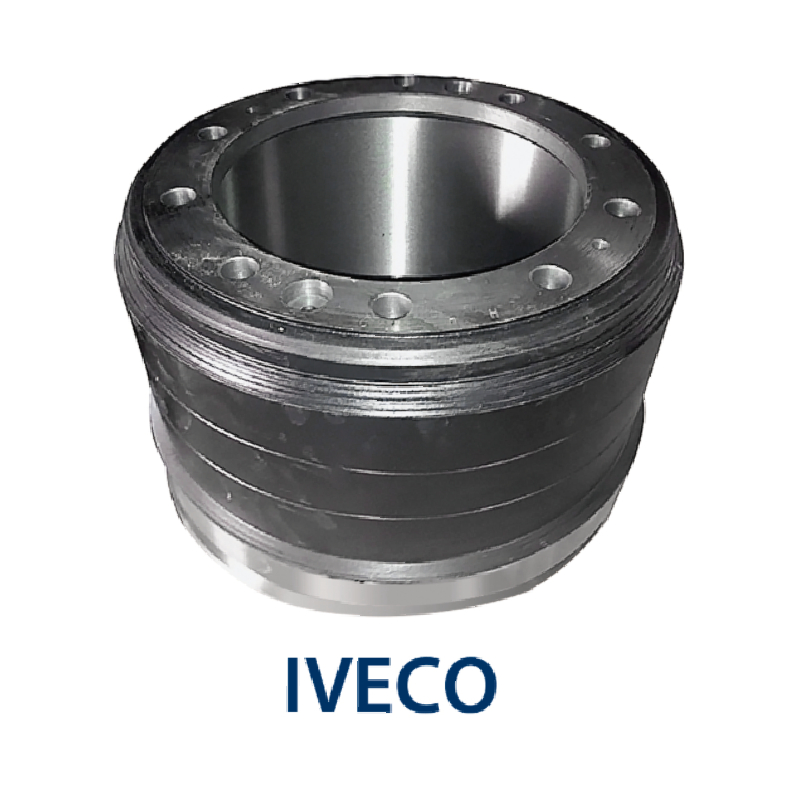Дек . 10, 2024 02:48 Back to list
Understanding the Process of Brake Drum Turning for Enhanced Vehicle Performance
Understanding Brake Drum Turning A Comprehensive Guide
Brake drums are an essential component of a vehicle's braking system, specifically in drum brake systems. Over time, brake drums can wear down due to friction from brake shoes, leading to a decrease in braking efficiency and safety. One effective method to restore the functionality of these components is brake drum turning. This article delves into the significance of brake drum turning, the process involved, and the benefits it offers.
What is Brake Drum Turning?
Brake drum turning, also known as machining the brake drum, is a process in which the surface of the brake drum is reshaped to remove imperfections, such as grooves, rust, and uneven wear. This procedure helps to create a smooth, even surface for the brake shoes to make contact, ensuring optimal braking performance. It’s a common practice among automotive technicians and is crucial for maintaining the efficiency and safety of a vehicle's brake system.
When is Brake Drum Turning Necessary?
Brake drum turning is typically recommended in several scenarios
1. Uneven Wear and Tear Over time, brake drums can develop high and low spots due to friction. This uneven surface can lead to vibrations and noises when braking, indicating that turning the drums may be necessary.
2. Scoring and Grooving If the brake drum shows signs of scoring or grooving, it may prevent the brake shoes from making adequate contact. This can diminish braking power and must be addressed through turning.
3. Rust and Corrosion Brake drums made of cast iron are susceptible to rust and corrosion, especially when exposed to moisture. Turning can eliminate surface rust, prolonging the life of the drum.
4. Brake Shoe Replacement Whenever brake shoes are replaced, it’s a good practice to inspect the brake drums. If they show signs of wear, turning can provide a fresh surface for the new shoes.
The Brake Drum Turning Process
The process of turning a brake drum typically involves the following steps
1. Inspection Before turning a brake drum, a thorough inspection is conducted. Technicians check for warping, cracks, and excessive wear. If the drum is too thin or damaged, it may need to be replaced rather than turned.
brake drum turning

2. Setup The drum is mounted on a brake lathe, a specialized machine designed to reshape the surface of the drum while ensuring it remains perfectly round.
3. Machining The lathe removes a thin layer of material from the surface of the drum. This process is closely monitored to maintain the correct dimensions and profiles.
4. Finishing Once the drum is turned, it may undergo finishing processes to create a smooth surface. Some technicians apply a non-directional finish to enhance the contact between drum and shoe.
5. Reinstallation After machining, the drum is reinstalled on the vehicle, and the brake system is tested to ensure it engages smoothly and effectively.
Benefits of Brake Drum Turning
Turning brake drums offers several significant advantages, including
- Cost-Effectiveness Rather than replacing worn brake drums, turning can be a more economical option, allowing for the continued use of the existing component while extending its life.
- Improved Braking Performance A smoothly turned drum enhances the surface area and contact between the brake shoe and drum, resulting in better functionality and reduced stopping distances.
- Reduction of Noise and Vibration By eliminating grooves and irregularities, turning can significantly reduce noise and vibrations associated with braking, leading to a more pleasant driving experience.
- Safety Maintaining a properly functioning braking system is crucial for vehicle safety. Turning brake drums ensures they operate effectively, reducing the likelihood of brake failure.
Conclusion
Brake drum turning is an essential maintenance procedure that can significantly enhance the safety and efficiency of a vehicle's braking system. Recognizing when to perform this process and understanding its benefits can help vehicle owners make informed decisions regarding their brake maintenance. Regular inspections and timely interventions, such as brake drum turning, can ensure a safer driving experience for everyone on the road. Always consult with a qualified automotive technician if you suspect any issues with your brake system, as they can provide expert advice and service tailored to your vehicle’s needs.
-
Brake Drum Man - High-Quality Drum Brake Drums & Brake Shoes for Reliable Performance
NewsJun.24,2025
-
High-Quality Brake Drum Kamaz – Durable Drum Brake Drum & Brake Shoe Replacement
NewsJun.10,2025
-
High-Quality Brake Drum Liza for Drum Brake Systems - Superior Durability and Performance
NewsJun.10,2025
-
High-Quality Brake Drum Kamaz – Durable Drum Brake Drum & Brake Shoe Solutions
NewsJun.10,2025
-
Durable Kamaz Brake Drums High-Performance Truck Parts
NewsJun.09,2025
-
Premium Brake Drum Maz Kit with Shoes Enhanced Braking
NewsJun.09,2025
